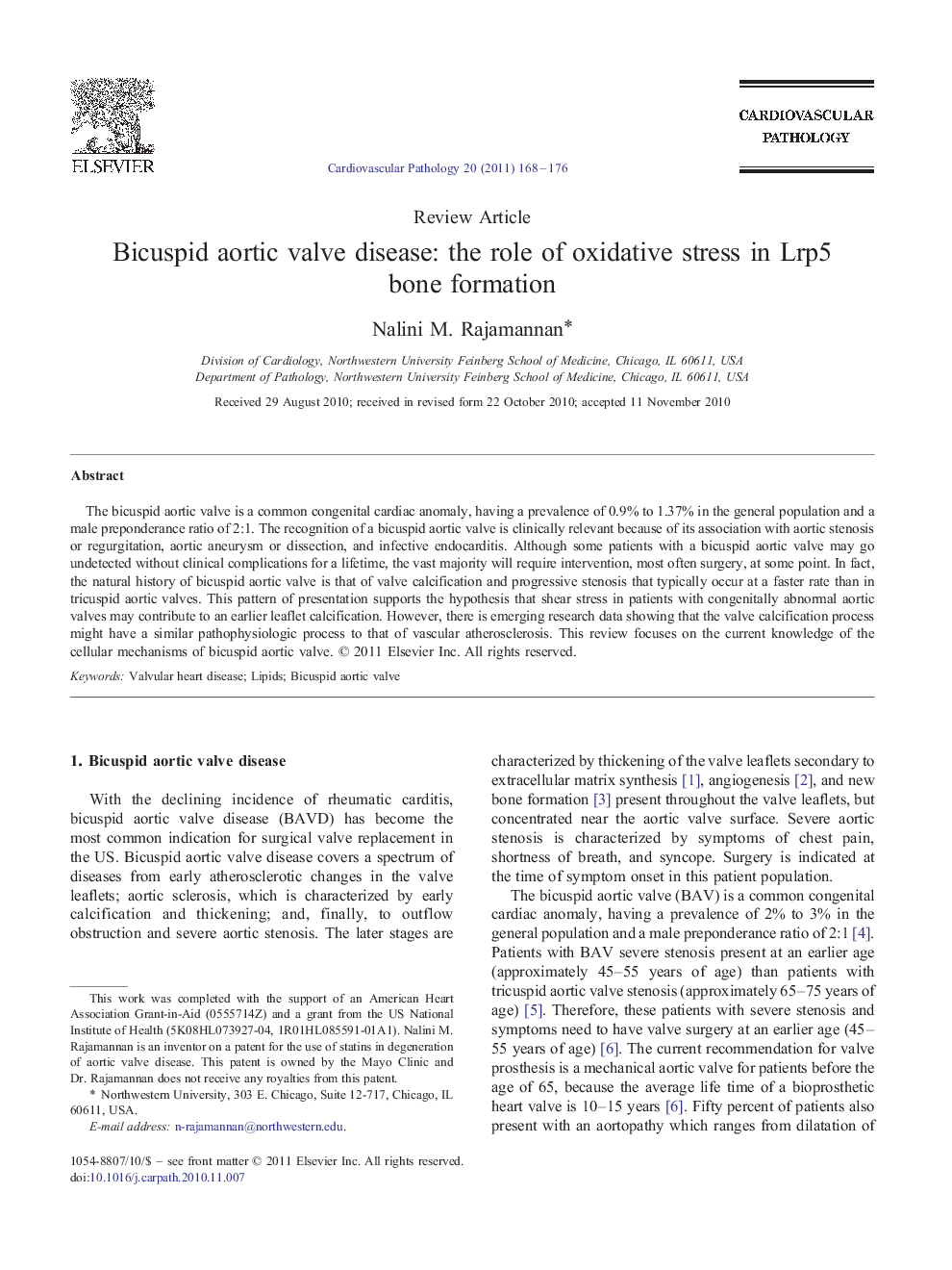| Article ID | Journal | Published Year | Pages | File Type |
|---|---|---|---|---|
| 2898968 | Cardiovascular Pathology | 2011 | 9 Pages |
Abstract
The bicuspid aortic valve is a common congenital cardiac anomaly, having a prevalence of 0.9% to 1.37% in the general population and a male preponderance ratio of 2:1. The recognition of a bicuspid aortic valve is clinically relevant because of its association with aortic stenosis or regurgitation, aortic aneurysm or dissection, and infective endocarditis. Although some patients with a bicuspid aortic valve may go undetected without clinical complications for a lifetime, the vast majority will require intervention, most often surgery, at some point. In fact, the natural history of bicuspid aortic valve is that of valve calcification and progressive stenosis that typically occur at a faster rate than in tricuspid aortic valves. This pattern of presentation supports the hypothesis that shear stress in patients with congenitally abnormal aortic valves may contribute to an earlier leaflet calcification. However, there is emerging research data showing that the valve calcification process might have a similar pathophysiologic process to that of vascular atherosclerosis. This review focuses on the current knowledge of the cellular mechanisms of bicuspid aortic valve.
Related Topics
Health Sciences
Medicine and Dentistry
Cardiology and Cardiovascular Medicine
Authors
Nalini M. Rajamannan,
